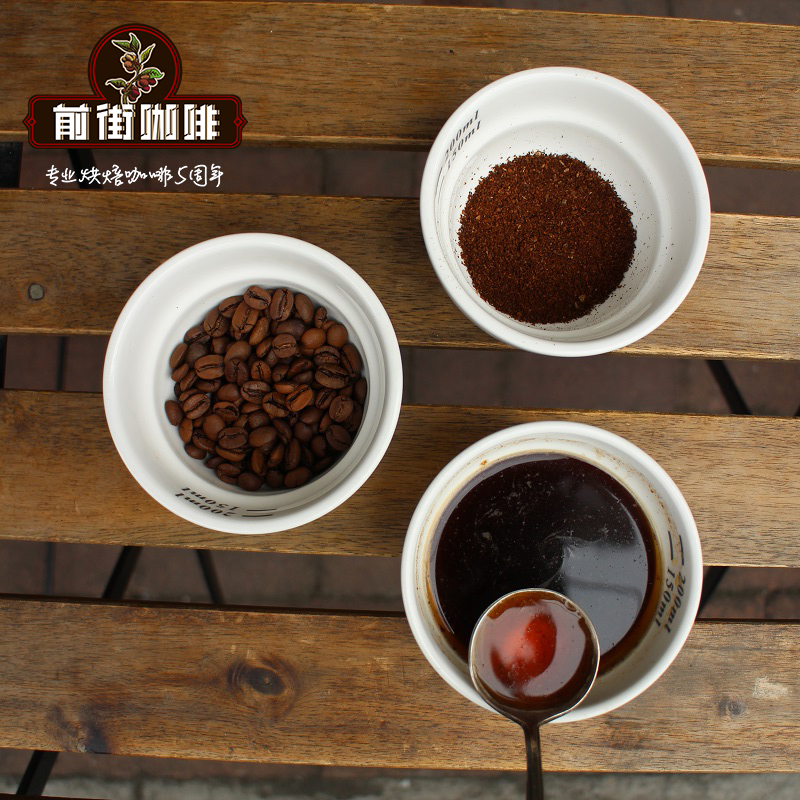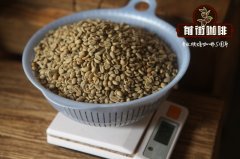What is the effect of powder bowl size on extraction Italian concentration? What do single-and double-headed powder bowls have on cloth powder?

Professional coffee knowledge exchange more coffee bean information please follow the coffee workshop (Wechat official account cafe_style)
What is the effect of powder bowl size on extraction Italian concentration? What's the difference between single-headed and double-headed powder bowls in cloth powder?
The size of the powder bowl is another reason to change the amount of powder, but this is not to adjust the yield of espresso, but purely for a more perfect extraction. Most of the powder bowls have been set by the manufacturer when they leave the factory. Usually, the amount of powder filling no more than plus or minus 1 gram will be better extracted.
Do not fill the powder in the powder bowl too high, so as not to touch the water outlet board above the powder bowl. If you find that the height of pressed powder touches the outlet board when you get into the powder bowl, you have to reduce the amount of powder. In this case, too high powder layer will not extract more espresso, on the contrary, it will reduce the efficiency and get unsatisfactory extraction results. On the other hand, if the extracted pressed powder is too wet and muddy, it does not mean that the espresso extracted is not good enough, but that the gap between the powder layer in the powder bowl and the outlet board is too large. Too little powder filling or too much coffee bean density can lead to this situation.
The structure of the powder bowl with double handle and single handle is different, so we need to treat it differently.
The middle of the handle itself is deeper than four weeks, so when filled with coffee powder, we use the tiger mouth of our hand or the lid of the grinder to smooth out the excess coffee powder and fill the gap in it at the same time. In this way, the amount of powder in the middle part will naturally be more than that around (at this point, some people will scrape off the middle part with the powder cartridge cover to make it sunken, so that if it is scraped off too much. On the contrary, it will cause uneven extraction.
Because the overall depth of the double-headed handle is the same, we need to increase the amount of powder in the middle when loading the powder, that is, to keep the shape of the hill moderately.
In addition, many people, whether after loading the powder or after pressing the powder, like to hit the four sides of the powder bowl with a powder hammer, which is actually a mistake, especially after pressing the powder, it is easy to cause the compacted pressed powder to be loose. on the contrary, it will cause uneven extraction.
The 'Time' is the last part of the Espresso extraction strategy, which is usually calculated in seconds. When the pump starts and the pump stops, the time consumed is the extraction time.
Time is the least important variable in any Espresso extraction strategy, but it can not only make a perfect Espresso, but also destroy the beauty of Espresso. If you use 20g of powder and extract 50g of espresso in only 10 seconds, your Espresso is almost impossible to taste good. In the extraction, the 'time' factor must be taken into account to extract a cup of Espresso with both sweet and complex flavor.
Need to reiterate Matt Perger's Espresso extraction strategy, always put the amount of powder in the first place, followed by the amount of extraction, and finally time.
At present, most coffee shops limit the extraction time to 22-40 seconds, or rather, 25-32 seconds, when extracting Espresso.
Generally speaking, rapid extraction of Espresso will have thinner Body and higher acidity; slightly slower extraction will bring more mellow Body and more sweetness to Espresso. If the extraction time is too short, Espresso will have a thin taste, weak flavor and sharp acid; if the extraction time is too long, Espresso will bring unpleasant bitterness and miscellaneous taste. The above is not a golden rule, but it is applicable to most of the extraction processes of Espresso.
"time" is far less important than "extraction quantity", which means that the whole extraction process should be based on the premise of obtaining the set extraction quantity, and on the premise of reaching the extraction amount, it is hoped that the time is just within the ideal range.
We assume that the ideal extraction strategy is as follows: 20g powder, 40g extraction quantity and 30 seconds extraction time.
In this strategy, 20g of powder is fixed, 40g of extraction is unshakable, and only time can be changed, because time is not as important as the other two. The extraction time of Espresso is a very strange thing, it does not affect the whole body as much as the amount of powder and extraction.
Jump out and say that there are three main factors that affect the duration of Espresso extraction:
1. Grinding degree
Imagine two pipes, one full of stones and the other full of sand, and then imagine pouring water into it. The water filled with stones obviously flows faster, while the sand is much slower.
This effect also applies to the degree of grinding of Espresso. The finer the grinding, the slower the velocity of water passing through the powder layer; the thicker the grinding, the faster the flow rate of water passing through the powder layer. Adjusting the grinding degree can not only achieve the extraction amount, but also flexibly change the extraction time.
two。 Pressure and flow rate of pump
Most espresso machines have a pump pressure of 8-9bar. Below this pressure, the extraction flow rate of Espresso becomes slower. As for the 'flow rate', it refers to the speed at which water flows out of the head of the coffee machine without the powder bowl. Most Italian coffee machines have a flow rate of 250-500 milliliters every 30 seconds.
3. Powder bowl
The effect of the powder bowl on the flow rate depends on the number of holes arranged at the bottom of the powder bowl and the size of these holes. These holes are called "outflow area" (Total Open Area/TOA), and the more TOA a powder bowl contains, the easier it is for water to flow out. This variation can be easily solved by using a VST powder bowl.
Next, let's focus on the 'degree of grinding', which will be the most controlled factor that can change the extraction time.
Once the amount of powder and extraction are both determined, adjusting the extraction time will be the last chance to change the extraction flavor, while adjusting the grinding degree can enhance or weaken the concentration and extraction rate at the same time.
Generally speaking, the fine grinding will enhance the extraction rate and concentration at the same time. The process of grinding more finely increases the extraction rate by increasing the extraction area of coffee and slowing down the flow rate of concentrated liquid.
The effect of changing the degree of grinding on Espresso is much smaller than directly changing the amount of extraction, but it is equally important. If it is well utilized, it will greatly improve the Espresso. "adjusting extraction quantity" can be regarded as "coarse adjustment", while "adjusting grinding degree" is "fine adjustment".
Imagine a situation where it takes 25 seconds to extract 50g of Espresso with a fixed amount of powder of 20g. Everything looks perfect, but when you taste it, body is thin and acerbic. Obviously, the extraction of this Espresso is insufficient and the concentration is low. In this case, there is no way to change the insufficient extraction by adjusting the amount of extraction. more extraction will cause a thinner taste, while less extraction will make it more acidic. At this time, grinding the coffee beans finer can solve the problems of insufficient extraction and low concentration, at the same time, it can reduce the acidity and increase the alcohol thickness.
Adjust bean grinder
The adjustment of each bean grinder is slightly different, but based on the accumulation of experience, you will soon be able to grasp the adjustment required for "slow 2 seconds" and "fast 5 seconds".
If the Espresso flow rate is too fast or too slow, the bean grinder needs to be adjusted. Once you have adjusted the bean grinder, you must first clean up the residual powder. About 90g of coffee powder will be left at the grinding plate, the connection of the bean warehouse and the outlet of each bean grinder. Although it would be a bit wasteful to remove the residual powder in this way, it is necessary.
The process of adjusting the bean grinder is a bit like adjusting the water temperature in the shower. At the beginning, you feel the water is cool and turn the hot water valve on. At this time, you have to wait for the water temperature to stabilize and then make the next adjustment according to whether it is suitable or not, rather than rashly adjust it. That will only lengthen the time to find the right water temperature.
For the bean grinder with timer, it is necessary to detect whether the amount of powder is expected after each adjustment of the mill, and adjust the timer according to the situation to make the amount of powder reach the expected value.
Keeping the soybean warehouse full helps to keep the time consistent, and when the bean position of the soybean warehouse drops, the gravity exerted by the coffee beans on the grinding plate decreases accordingly. For some bean grinders, this will speed up the extraction, although the degree of grinding and powder content have not changed.
Never control the extraction time by changing the amount of powder, more powder will lengthen the extraction time, and less powder will speed up the extraction. That's right! But that means leaving all extraction strategies behind. Always remember-the amount of powder is the first, the amount of extraction is the second, and the time is the third.
Finer grinding does not always increase the extraction rate, and there is a critical point beyond which the finer coffee powder will seriously prevent the flow of water through the powder layer, reducing the extraction rate and concentration together. This state is called "channel effect", which means that the ultra-fine powder can not be extracted by caking in the process of extraction.
As the degree of grinding becomes finer and finer, the time to reach the amount of extraction becomes longer and longer, which will increase the extraction rate and concentration. Until some point, the extraction rate and concentration will not rise but decrease, similar to the channel effect mentioned in the previous paragraph, baristas call it "Anti-Logic".
Through the practice of constantly adjusting the degree of grinding, we will grasp the point that the extraction rate does not rise but decrease. Determine the amount of powder and extraction, grind fine and re-grind in stages, taste each Espresso, until the extraction rate and concentration begin to decrease at a certain degree of grinding, the "not rising but falling point" is found. This concept is much like the 80:20 theory, which insists on extracting more substances until at some point it is found that no more will be extracted, and a step back at this time will lead to satisfactory extraction results.
To sum up.
1. Treat the variable "time" flexibly in order to achieve the ideal extraction quantity.
two。 The time is the 'fine tuning' parameter and the extraction quantity is the 'coarse tuning' parameter.
3. Pressure, water flow rate and powder bowl all affect time, but there is no need for over-regulation.
4. Fine powder means slower flow, while coarse powder flows faster.
5. Adjust the fineness of coffee to the degree that "the amount and concentration of extraction continue to increase and begin to decrease".
6. Every time you adjust the bean grinder, you must clear out more residual powder (about 90g) than you think.
There are three points that are very important for making an espresso:
Amount of powder-weight of coffee powder in the bowl after grinding
Amount of extraction-weight of concentrated liquid after extraction
Extraction time-time of contact between coffee powder and water
The amount of powder is the first step in creating an espresso recipe, which can be between 5 and 30 grams depending on the style you want to express (depending on the size of your powder bowl, of course).
There is no doubt that more powder can be extracted and more concentrated, and vice versa. But in the process of extraction and debugging, you should follow the following principles:
Do not adjust the flavor balance of Espresso by changing the amount of powder.
Do not increase or shorten the extraction time by changing the amount of powder.
Do not increase or decrease the intensity of concentration by changing the amount of powder.
In short, you should keep the same amount of powder in the process of debugging.
In addition, the size of the coffee cup and the strength of the coffee drink you want to express are also factors to consider, that is, if you have a large cup, no matter how good your concentrated flavor is, it will be masked by milk. Therefore, you need to increase the concentration by increasing the amount of powder to enhance the flavor of the coffee in the cup. On the contrary, if your cup is very small, then you can choose to reduce the amount of powder and reduce the amount of extraction.
Changing the thickness of the powder layer will affect the flow rate, penetration rate, extraction temperature, espresso yield, taste and balance, and so on.
If the amount of powder filling is constantly adjusted, it will be difficult to infer which factors affect the extraction results. Under the condition that the amount of powder is constant, it will be much easier to calculate the factors affecting the extraction.
Important Notice :
前街咖啡 FrontStreet Coffee has moved to new addredd:
FrontStreet Coffee Address: 315,Donghua East Road,GuangZhou
Tel:020 38364473
- Prev

How do different picking and handling methods of coffee beans affect their quality and taste? Pick coffee manually
Professional coffee knowledge exchange more information about coffee beans Please follow the coffee workshop (Wechat official account cafe_style) how different picking and handling methods of coffee beans affect the quality and taste? What are the benefits of picking coffee fruits by hand? Normally, 45-year-old coffee trees blossom at about 23 months. Its flowers are white tubular petals with jasmine
- Next

What are the advantages of coffee hand net baking? How long does it take to bake coffee beans with a hand net? How to bake with a hand net
Professional coffee knowledge exchange more coffee bean information please pay attention to the advantages of coffee hand network roasting in the coffee workshop (Wechat official account cafe_style)? How long does it take to bake coffee beans with a hand net? How to bake with a hand net? Recently, many friends will ask some questions about baking skills, including: when is dehydration? How many degrees does it take to climb? Smoke exhaust problem? What is the taxiing action?
Related
- Detailed explanation of Jadeite planting Land in Panamanian Jadeite Manor introduction to the grading system of Jadeite competitive bidding, Red bid, Green bid and Rose Summer
- Story of Coffee planting in Brenka region of Costa Rica Stonehenge Manor anaerobic heavy honey treatment of flavor mouth
- What's on the barrel of Blue Mountain Coffee beans?
- Can American coffee also pull flowers? How to use hot American style to pull out a good-looking pattern?
- Can you make a cold extract with coffee beans? What is the right proportion for cold-extracted coffee formula?
- Indonesian PWN Gold Mandrine Coffee Origin Features Flavor How to Chong? Mandolin coffee is American.
- A brief introduction to the flavor characteristics of Brazilian yellow bourbon coffee beans
- What is the effect of different water quality on the flavor of cold-extracted coffee? What kind of water is best for brewing coffee?
- Why do you think of Rose Summer whenever you mention Panamanian coffee?
- Introduction to the characteristics of authentic blue mountain coffee bean producing areas? What is the CIB Coffee Authority in Jamaica?

